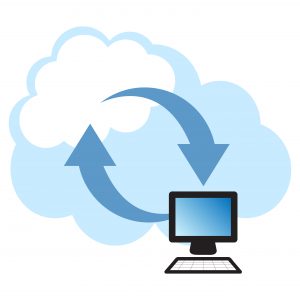The Evolution of the Cloud
The Evolution of the Cloud
 The Cloud has been the hot topic in IT for what feels like almost a decade now. It has changed the landscape of how business does IT. Virtually everyone has experienced some move to the Cloud. You may have moved a main line-of-business application or even full servers to the Cloud. Your move to the Cloud may have been less dramatic. Maybe you use Google Drive or Dropbox, or maybe your SPAM screening or email encryption is Cloud based.
The Cloud has been the hot topic in IT for what feels like almost a decade now. It has changed the landscape of how business does IT. Virtually everyone has experienced some move to the Cloud. You may have moved a main line-of-business application or even full servers to the Cloud. Your move to the Cloud may have been less dramatic. Maybe you use Google Drive or Dropbox, or maybe your SPAM screening or email encryption is Cloud based.
Many things have happened in the IT landscape, since Cloud solutions first came to the forefront of the IT discussion. These things for the most part make Cloud more affordable and desirable.
Internet connectivity has improved to the point where many of us have fiber for Internet, at speeds that seemed impossible a few years ago. Not only is fiber typically faster, particularly for upload, it also has lower latency, which I often describe as the elimination of delays on the on-ramp to the freeway. Faster, cheaper, and more consistent Internet means a better Cloud experience at a lower cost.
Cloud hosting providers have consolidated and become more secure. Many of the IT providers and software houses who were hosting in their own space have either gone out of business or recognized the futility of trying to compete with Google, Microsoft, Amazon, Rackspace and other large regional players. I recently heard a story from someone closely involved with a good sized fairly large hosting firm. He said that one day the calls just started coming in from people moving to the Amazons and Microsofts of the world, and those calls did not stop, until they had to close the doors. Though it is sad to hear of a local company closing its doors, the resulting environment is a strong platform at the large players at a much lower cost. Smaller providers often could not produce the consistency and security in a hosting environment that the very large guys do. This is an instance where larger organizations can scale much easier than small ones at a much lower cost.
Another thing that has changed over time is that software companies have matured their Cloud offering. As the Cloud was emerging, many providers were scrambling to get an offering to market. As a result, their software in the Cloud was just not as good as the long standing on-premise software. For many providers this has changed. They now offer a mature Cloud product that has all of the features and sometimes more.
Costs are continuing a downward trend. All of the leading providers of (IaaS) Infrastructure as a Service, which is basically servers in the Cloud, have reduced costs over time. There are still things to consider as you look at costs. First and foremost, is the cost of (SaaS) Software as a Service, which is paying by the month for a specific software package in the Cloud. Many Software as a Service offerings are still priced in a way that makes an on-premise solution less expensive in 18 to 26 months. I expect some of these will shake out as well and reduce their costs.
Flexibility and scalability have taken dramatic leaps as well. Most providers allow you to scale up and add more users, more space, or more bandwidth, and then scale back down with no obligation. Microsoft, for example will let you power off your servers on a daily schedule, so that you don’t have to pay for resources, when your business is closed and nobody is using the systems. In addition, many vendors have included more disk space, more processing resources, and in many cases even additional software functionality, in their base package.
Another change is that SaaS providers have switched development efforts to lead with their Cloud platform. This means that development happens first on the Cloud, so new version upgrades release here first. As a Cloud user, you get the new features first and automatically without having to wait for someone to upgrade your server, or perhaps upgrade the hardware first as often happens in an on-premise environment. This is great, if your SaaS software provider is a good partner with strong process and strong quality assurance. If they are not, you are stuck with a bad upgrade or a feature change that you really don’t like. The good news is that there are more good providers than ever before as many of the subpar providers have been forced out of the space by the market.
Is the Cloud a forgone conclusion for your organization? The answer is “Yes”. Nearly every company has some Cloud hosted software or infrastructure. The interesting thing is that in most cases, it is not a wholesale decision. We find that most companies still need some local infrastructure to control network access, shared printing, and applications that are just better or more affordable locally. Because of this we end up running a hybrid solution that gives you the best overall environment. The things that we most often move to the Cloud? Backups, email, file sharing, collaboration, and line-of-business software packages that have a good and affordable Cloud solution.
I’m not sure who said it first, but, the Cloud is just your data on somebody else’s server. That really simplifies things and underlines the fact that you need to be sure you have a good Cloud partner. That is a huge factor in answering the question, “Is it time for you to move?” It really depends on your business, your software, the benefits to you, and how you view the cost.

Scott Hirschfeld is the President of CTaccess, a Brookfield IT support company that has been helping businesses stop focusing on IT and getting back to doing business since 1990. Under his leadership CTaccess provides the business minded approach of larger IT companies with the personalized touch of the smaller ones. Connect with Scott on LinkedIn.
